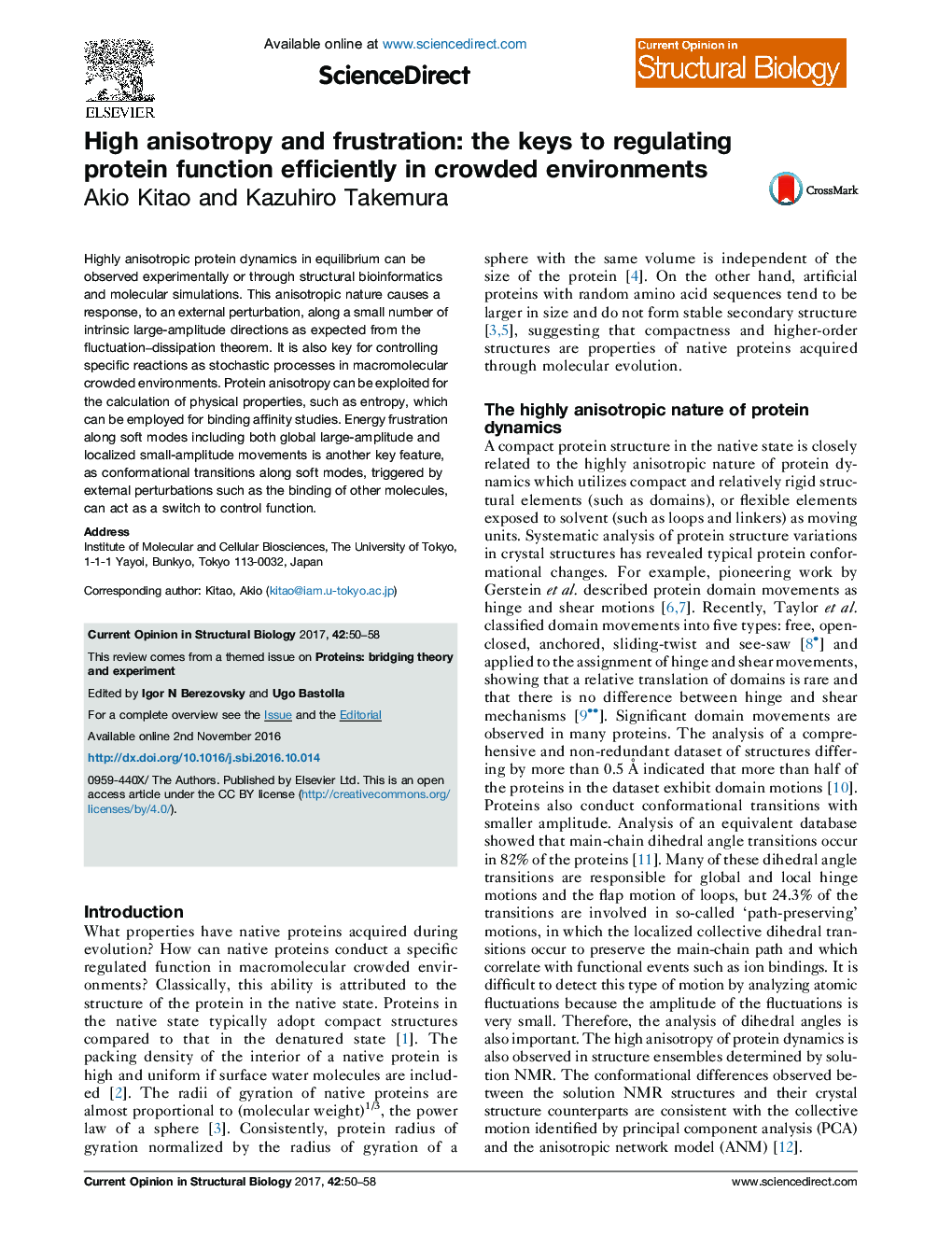| Article ID | Journal | Published Year | Pages | File Type |
|---|---|---|---|---|
| 5510890 | Current Opinion in Structural Biology | 2017 | 9 Pages |
â¢Highly anisotropic protein dynamics induces responses to external perturbations.â¢The responses occur along a small number of intrinsic large-amplitude directions.â¢Protein anisotropy is also useful in calculations of entropy.â¢Energy frustration of soft modes is another factor in regulating protein function.â¢Transitions triggered by perturbations can act as a switch to control function.
Highly anisotropic protein dynamics in equilibrium can be observed experimentally or through structural bioinformatics and molecular simulations. This anisotropic nature causes a response, to an external perturbation, along a small number of intrinsic large-amplitude directions as expected from the fluctuation-dissipation theorem. It is also key for controlling specific reactions as stochastic processes in macromolecular crowded environments. Protein anisotropy can be exploited for the calculation of physical properties, such as entropy, which can be employed for binding affinity studies. Energy frustration along soft modes including both global large-amplitude and localized small-amplitude movements is another key feature, as conformational transitions along soft modes, triggered by external perturbations such as the binding of other molecules, can act as a switch to control function.
Graphical abstractDownload high-res image (142KB)Download full-size image
